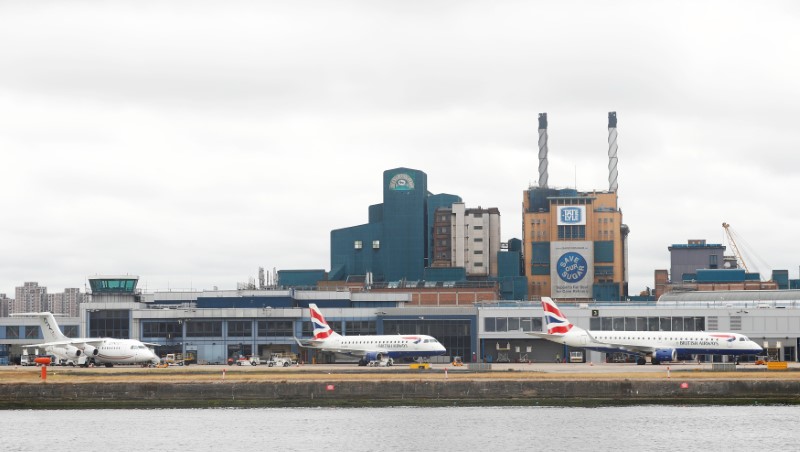By Costas Pitas
LONDON (Reuters) - If you fly into London City in two years' time, air traffic controllers won't see your plane through a window but will guide it down from screens 70 miles away as the airport becomes one of the first in a major capital to use a digital control tower.
Staff will monitor planes with the help of high-tech 360-degree cameras and sensors fitted to a newly constructed tower, with data and a panoramic views all feeding through to the national air traffic control centre in the southern town of Swanwick.
The airport, which is undergoing a 350 million pound expansion, is located near the Canary Wharf financial centre in east London and used by over 4.5 million passengers mainly for business travel between Europe's major centres.
But from 2019, controllers will be based over 110 km away where the airport says an array of digital tools will improve their awareness of situations and efficiency, allowing for quick decision-making.
"A pioneering new digital air traffic control system will enhance safety and improve resilience, setting a new standard for the global aviation industry to follow," London City Airport Chief Executive Declan Collier said.
"This cutting edge proven technology future-proofs London City Airport's air traffic control for the next 30 years and beyond," he said.
The current control tower is reaching the end of its operational lifespan, he said, with the new technology already in use at Sweden's smaller Ornskoldsvik and Sundsvall airports.
Controllers will be equipped with a range of tools including a close-up view of aeroplane movements along the 1.5-km runway and cameras which can zoom in up to 30 times for close inspection.
Pictures from the airfield and data will be sent through independent and secure fibre networks to the operations room in Swanwick, the airport said.
The technology is supplied by Saab Digital Air Traffic Solutions, a partnership between LFV, the Swedish air navigation service provider, and military defence and civil security firm Saab.
The airport, bought last year by a consortium including Canadian pension funds, is due to expand as part of a development programme which will see an extra two million people flying to and from it every year by 2025 and an additional 30,000 annual flights.

Construction of the 50-metre digital tower will begin later this year and is due to be completed in 2018, followed by a year of testing and training before it becomes fully operational.